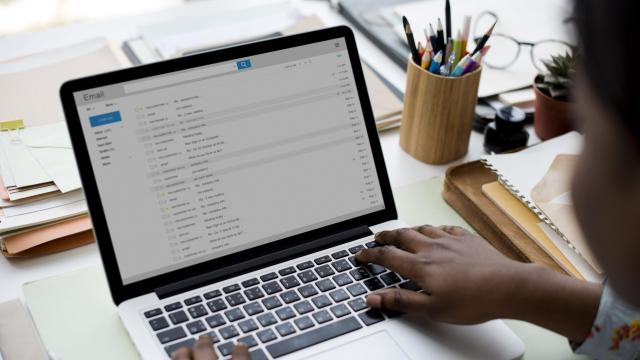Recent research from Verizon shows that 96% of social engineering attacks are done through email, and for that reason alone, you might want to consider adding extra security. Let’s discuss the definition of a “secure email server,” its pros and cons, and how to set one up.
What is a secure email server?
The main difference between a regular email and a secure email server is the level of protection: Secure email servers have additional security features that take time and effort to set up, but are more likely to stand up against hackers and bad actors than traditional email servers.
To simplify matters, the actual act of using a secure email address is not much different than regular email — you won’t have to learn any new skills when you switch to a secure email. However, you do need to be sure that the provider you’re choosing actually uses a secure server. Some popular email providers like Google or Microsoft may claim that their services are secure, and they are, to some extent, but these services can’t offer the same level of control and security that setting up your own secure server does.
A truly secure email server can’t access your conversations, can’t profile you, won’t show you targeted ads, and won’t log any data or metadata.
What are the pros and cons of a private email server?
As with all tech decisions, you should be aware of both the benefits and drawbacks to using secure email servers:
On the pro side:
- Advanced privacy
- The server is unavailable to your employer or email provider
- More control over email management
- Advanced features that general email providers lack
On the con side:
- Creating a secure email takes time and effort
- It requires more responsibility (installing software to prevent hacks, learning how to protect messages)
- It requires a hard drive with enough capacity
Basically it’s privacy, security, and reliability that are the top reasons for creating your private email server.
Setting up a secure email server
While the idea of setting up a secure email server may seem intimidating at first, it’s actually an easy process. It does get a bit technical, but plenty of resources available online can help walk you through the process.
Here are some of the things you’ll need to get started:
- A domain name (yourdomain.com) you will use to set up an email address
- A cloud server or dedicated server that has a 1 GHz processor, 1 GB+ of RAM space, and 5 GB of disk space
- Free, open-source Mailcow software
When creating a personal secure email server, it’s best to go with a cloud server, whereas businesses would benefit from having a dedicated email server.
The first step is to configure DNS records. You can either use the domain registrar’s DNS, in which you’d follow these steps:
- Login to the domain registrar
- Set the nameservers of [yourdomain.com] to your domain registrar’s nameservers
- Set up the mail.example.com A record to the primary IP of the server
- Set the MX record of example.com to: mail.example.com
If you’re using an external DNS record, you’ll follow the same steps listed above, but set the nameservers to match your external DNS. Juts note that it’ll take 24-48 hours for the DNS records to propagate before you can receive and send emails.
The following steps will help you with mail server installation. First, you’ll want to log in to your SSH. Then, you’ll need to update system packages, install curl and git, download the docker and docket components and update docker settings to executable.
The next step after performing these steps is to ensure your umask equals 0022 and change into /opt directory. You’ll download Mailcow files, change them into the Mailcow directory and then generate the configuration file. You’ll pull the images, run the composer file, and your installation will be complete. You’ll now be able to log in to your server using your username admin and password.
You’ll want to create a unique password and then go into the configuration panel to set up various email domains and email addresses. You’ll then click on the mailbox tab to add email users.
Finally, to access the mailbox, use the webmail interface at http://mail.yourdomain.com/SOGo/. From there, you can send and receive emails, check your calendar, and view and make changes to your address book.
It’s suggested that you reach out to an experienced web solution provider if you run into any problems along the way — there are plenty you can access online to help you with any server issues you may encounter.

Leave a Reply
You must be logged in to post a comment.